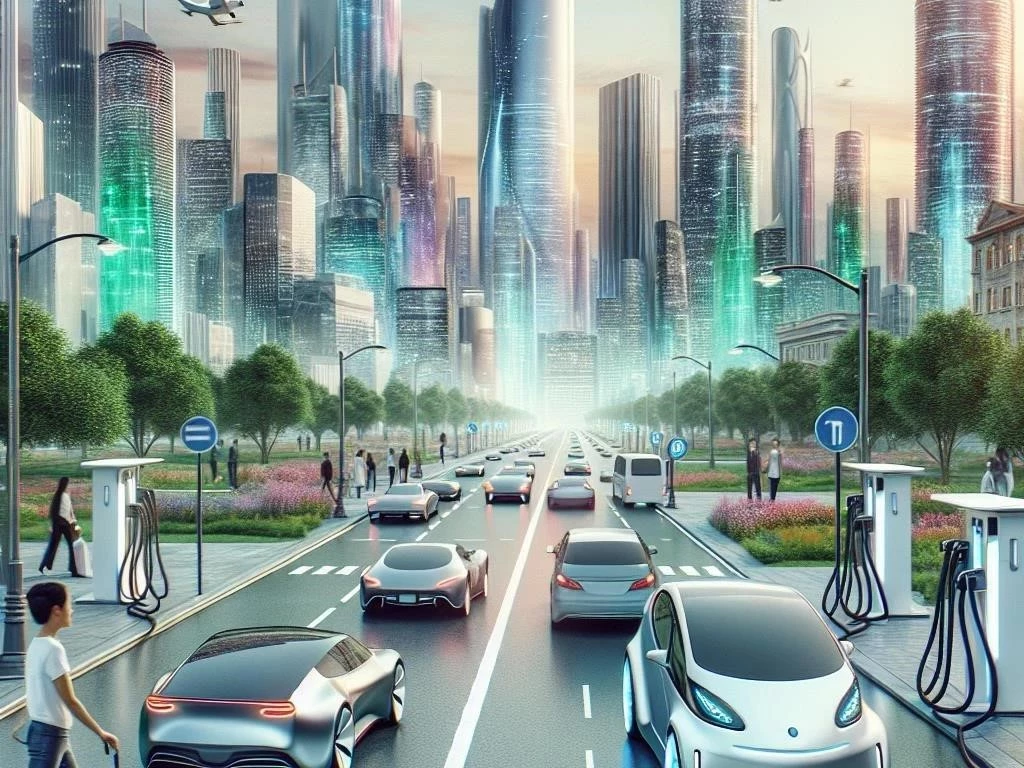Electric vehicles represent a transformative shift in transportation, promoting sustainable transport, reducing emissions, and advancing clean energy solutions to combat climate change effectively.
1.1 Defining Electric Vehicles and Their Role in the Automotive Industry
Electric vehicles are powered by electric motors and batteries, minimizing reliance on fossil fuels. As the automotive industry evolves, these vehicles are pivotal in reducing greenhouse gas emissions and enhancing energy efficiency. Their integration into the market signifies a shift towards sustainable transport solutions, aligning with global efforts to innovate and develop cleaner, more efficient transportation systems for future mobility.
1.2 The Importance of Sustainable Transport in Combating Climate Change
Sustainable transport plays a crucial role in addressing climate change by reducing emissions and encouraging the use of renewable energy sources. Transitioning to electric vehicles significantly lowers the carbon footprint associated with traditional transportation methods. By prioritizing green technology and smart transportation, society can effectively combat climate change, promote energy efficiency, and foster a cleaner, healthier environment for future generations.
The Technological Advancements Behind Electric Cars
Technological advancements in electric vehicle design enhance performance, battery technology, and energy efficiency, driving electric car adoption and transforming the automotive industry for sustainable transport.
2.1 Innovations in Battery Technology and Energy Efficiency
Recent innovations in battery technology have significantly improved energy density, charging speed, and longevity. These advancements enhance the range and overall efficiency of electric vehicles, addressing consumer concerns. Furthermore, integrating renewable energy sources into charging infrastructure supports sustainable transport goals. As battery technology continues to evolve, electric cars become more viable, promoting wider adoption and contributing to emissions reduction in the automotive industry.
2.2 The Development of Charging Infrastructure and Its Impact on Electric Car Adoption
The expansion of charging infrastructure is crucial for promoting electric car adoption. Accessible and efficient charging stations alleviate range anxiety, enabling consumers to transition confidently to electric vehicles. As governments invest in infrastructure development, the automotive industry can support cleaner alternatives. Improved charging options, including fast chargers and smart grids, encourage widespread acceptance of electric cars, fostering sustainable transport and reducing environmental impact.
Environmental Impact and Emissions Reduction
Electric cars significantly reduce greenhouse gas emissions compared to traditional vehicles, contributing to cleaner air and less environmental impact, essential for sustainable transport and climate change mitigation.
3.1 Analyzing the Carbon Footprint of Electric Vehicles vs. Traditional Cars
Electric vehicles typically have a lower carbon footprint than traditional gasoline-powered cars, especially when powered by renewable energy sources. The life cycle emissions, including manufacturing and disposal, also favor electric vehicles. As battery technology and energy efficiency improve, their environmental impact decreases further. Understanding these differences is crucial for consumers and policymakers in promoting sustainable transport solutions to combat climate change effectively.
3;2 The Role of Renewable Energy in Promoting Clean Energy for Electric Cars
Renewable energy plays a pivotal role in powering electric vehicles sustainably, significantly reducing their overall carbon emissions. By integrating solar, wind, and hydroelectric power into charging networks, the environmental impact of electric cars diminishes. This synergy encourages clean energy adoption and enhances energy efficiency. As renewable sources become more prevalent, electric vehicles can contribute effectively to global emissions reduction strategies and climate change initiatives.
Future Mobility and Transportation Innovation
The future of mobility is shaped by electric vehicles, emphasizing transportation innovation, smart technology integration, and sustainable practices, ultimately leading to a cleaner, more efficient transport system.
4.1 The Rise of Zero-Emission Vehicles and Smart Transportation Solutions
The emergence of zero-emission vehicles marks a significant shift in the automotive industry, promoting cleaner alternatives to traditional cars. Smart transportation solutions, such as connected vehicle technology and integrated mobility platforms, enhance efficiency and reduce congestion. As electric vehicle adoption increases, these innovations support sustainable transport initiatives, driving the transition towards environmentally friendly solutions that address urban mobility challenges and climate change effectively.
4.2 Government Incentives and Infrastructure Development to Support Electric Car Models
Government incentives play a critical role in promoting electric car models, making them more accessible to consumers. Financial support, tax rebates, and grants encourage electric vehicle adoption. Additionally, infrastructure development, including charging stations and renewable energy integration, facilitates this transition. These initiatives enhance the automotive industry’s shift towards sustainable transport, significantly impacting emissions reduction and fostering a greener future for mobility.
Overcoming Challenges: Range Anxiety and Public Transportation Integration
Addressing range anxiety and enhancing public transportation integration are essential for electric vehicles’ widespread acceptance, ensuring convenient, reliable, and sustainable transport solutions for all users.
5.1 Addressing Range Anxiety Through Technological Solutions
Technological advancements play a vital role in alleviating range anxiety associated with electric vehicles. Innovations such as improved battery technology and real-time charging station locators enhance user confidence. Additionally, smart navigation systems can optimize routes, ensuring drivers can efficiently manage their journeys. As charging infrastructure expands and battery range increases, consumers will feel more secure in adopting electric vehicles as their primary mode of transport.
5.2 The Future of Urban Mobility and Alternative Fuels in Electric Transportation
The future of urban mobility relies on integrating electric vehicles with alternative fuels and innovative transportation solutions. This synergy promotes cleaner air and reduced emissions, addressing climate change effectively. Additionally, public transportation systems can incorporate electric buses and trams, enhancing overall efficiency. As cities prioritize sustainable transport, electric vehicles and alternative fuels will play a crucial role in reshaping urban landscapes for future generations.

